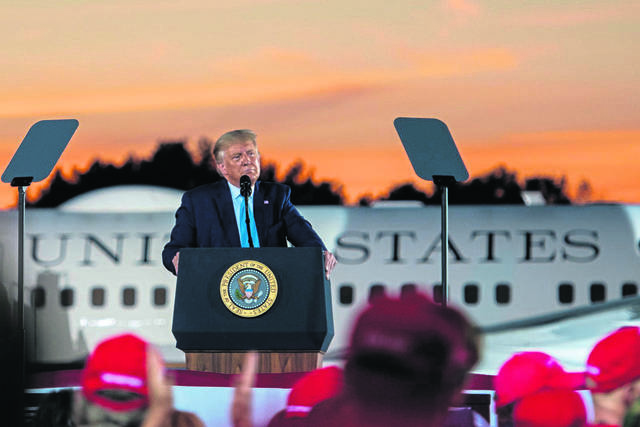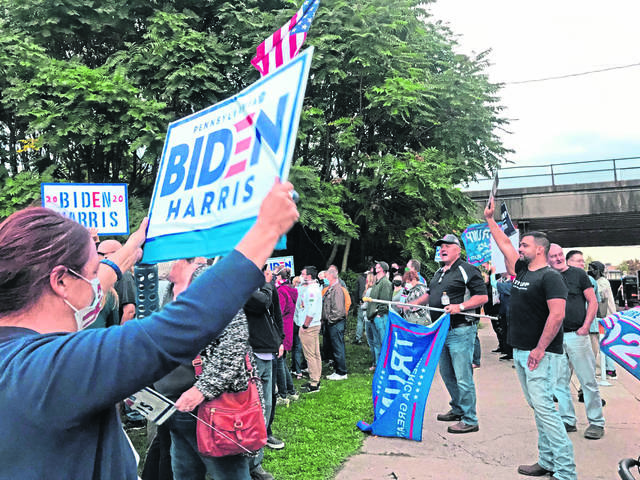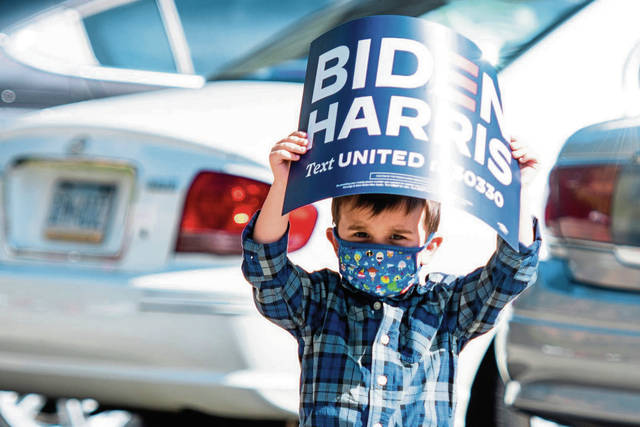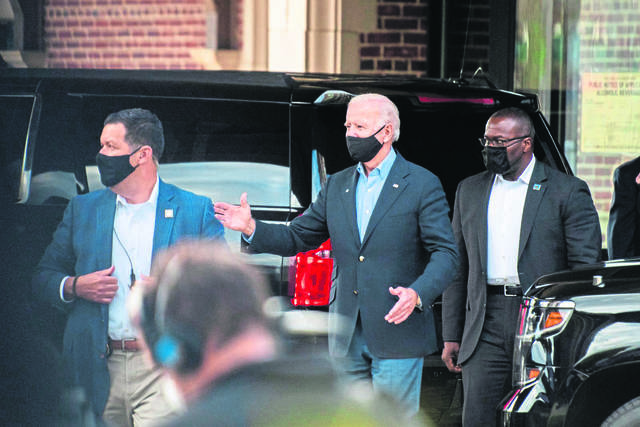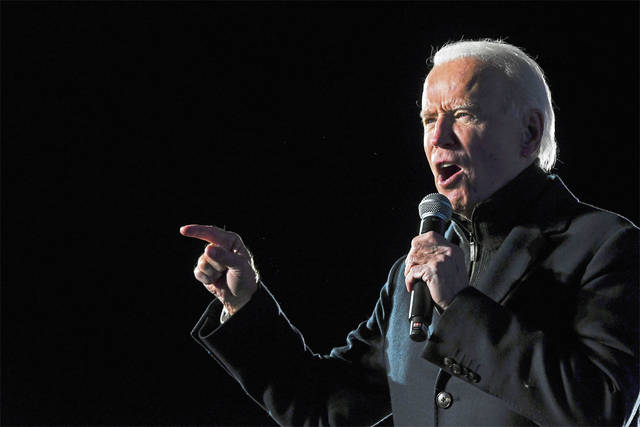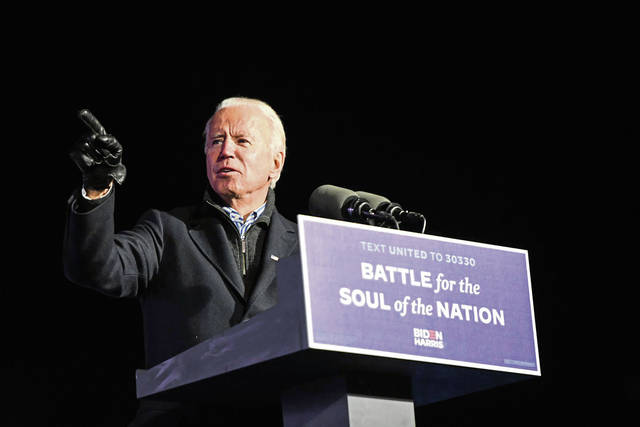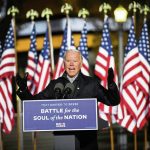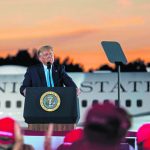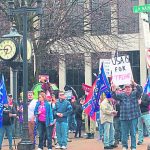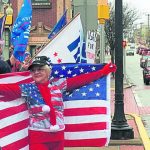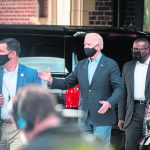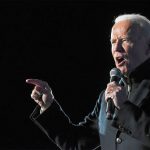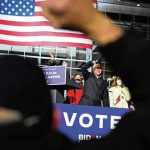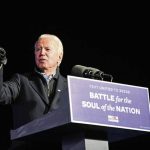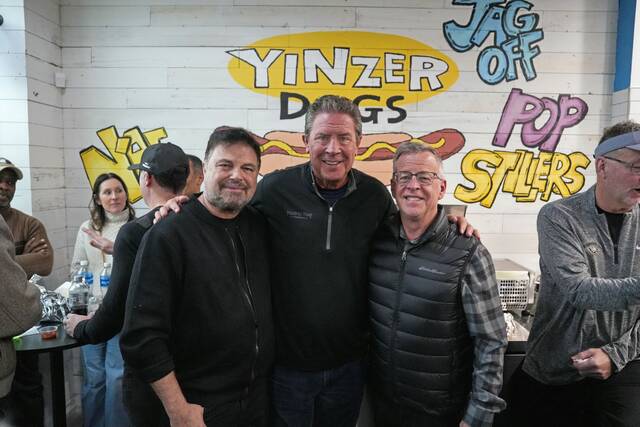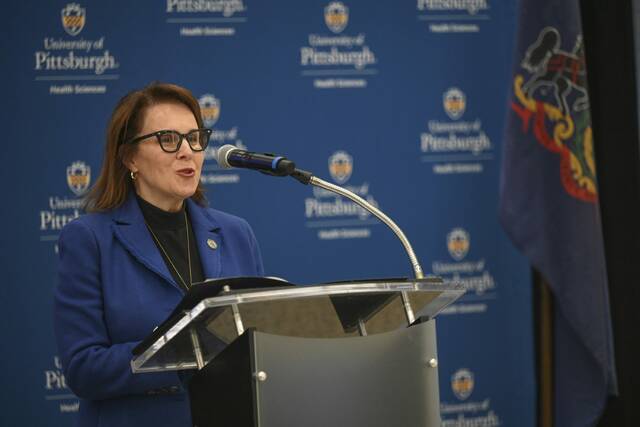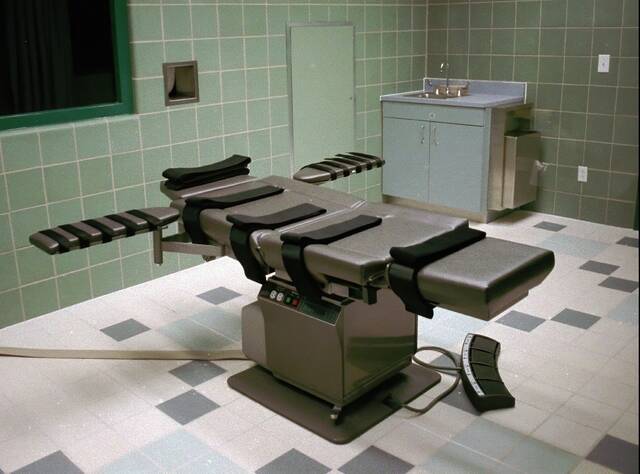Editor’s note: Three topics kept us transfixed this year: the deadly coronavirus pandemic, the election and a wave of protests demanding racial justice. As the year comes to an end, the Tribune-Review explores the moments that defined the year.
America’s quadrennial exercise in presidential politics took a new twist in 2020 as Americans by the millions voted by mail in an election unlike any other — and one that saw Pennsylvania become ground zero in the campaign.
The coronavirus pandemic, which colored nearly every aspect of life as it raged through the country, was a major driver in the growth of mail-in balloting. Americans fearful of the virus decided to vote by mail, despite President Trump’s repeated complaints it was a process ripe for fraud.
Pennsylvania’s Republican-led General Assembly overwhelmingly approved a dramatic expansion of mail-in voting options, a measure Gov. Tom Wolf signed in Oct 2019 — before the virus existed.
Not only did the pandemic drive voters to the post office, it prompted Pennsylvania to join 10 other states in delaying their primary elections. As the shutdown was in full force by late March, state officials voted to delay the April 28 primary until June 2.
By that time, it was apparent former Vice President Joe Biden had taken the lead for the Democratic nomination, banishing a large field of contenders that once included former South Bend, Ind., Mayor Pete Buttigieg; U.S. Sens. Elizabeth Warren (Mass.), Amy Klobuchar (Minn.), Bernie Sanders (Vt.), Kamala Harris (Calif.) and Cory Booker (N.J.); millionaires Tom Steyer and Andrew Wang; and New Age spiritual leader Marianne Williamson, among others.
By late spring, the political landscape — already rough with disputes over the pandemic — grew rockier. Racial tensions flared as Americans took to the streets after the release of a video that showed white Minneapolis Police Officer Derek Chauvin kneeling on the neck of George Floyd, a Black man who had been arrested on suspicion of passing a bogus $20 bill. The video showed Floyd, who was handcuffed face down on the concrete, pleading for mercy for more than 8 minutes as his life slipped away.
Protests that occasionally erupted into violence filled the streets for days in Pittsburgh and elsewhere, prompting Trump — who cast himself as a “law and order” president — to call for federal intervention.
While calls for racial justice affected the presidential contest, the global pandemic continued to play a major role in it. Democrats roundly condemned Trump’s handling of it as Biden retreated to his Delaware home to conduct a virtual campaign.
Democrats underscored their commitment to mitigating the spread of the virus by holding a virtual national convention.
Republicans led by Trump, who continued to downplay the seriousness of the virus and called for reopening the nation, went live with a convention that culminated with the incumbent president accepting the GOP nomination at a crowded party on the South Lawn of the White House.
Focusing on ‘Blue Wall’
Pennsylvania, one of several so-called Blue Wall states that went for Trump by narrow margins in 2016, became a major focal point of the race as summer kicked into fall.
On Sept. 3, Trump swooped into Westmoreland County on Air Force One for an event that drew thousands of supporters to the Arnold Palmer Regional Airport in Unity.
The so-called Trump House in Unity became a shrine that thousands of fervent Trump supporters trekked to day after day. For her efforts, Trump House creator Leslie Baum Rossi was invited to attend Trump’s acceptance speech on the White House lawn.
Before the campaign ended, Trump would fly into the Pittsburgh area for multiple airport rallies, stopping in Moon, Johnstown and Butler, as well as locations in central and eastern Pennsylvania.
Biden, whose invitation-only campaign events required masks and socially distanced seating arrangements, also made multiple trips to the state. He touted his Scranton working-class roots at events featuring limited attendance, including a meeting with union leaders in New Alexandria during a Sept. 30 train tour through parts of Ohio and Pennsylvania that kicked off the public portion of his campaign, with stops in Pittsburgh, Greensburg and Latrobe.
Biden drew heavily on former Trump supporters who helped the president win a narrow victory in Pennsylvania in 2016. He also benefited from a well-organized network of grassroots supporters, led largely by women, who chipped away at that margin in Trump country communities in counties such as Fayette, Somerset and Westmoreland.
As the campaign went down to the wire, the candidates and their surrogates made more than five dozen forays into Pennsylvania, including multiple rallies in the final days of the campaign. Biden and Lady Gaga appeared outside Heinz Field in Pittsburgh for a drive-up rally the night before the election.
Prior to @JoeBiden’s remarks tonight in #Pittsburgh, @ladygaga takes the stage outside Heinz Field to cheering fans waving signs saying, “We’re GAGA for Joe & Kamala.”
“This is a big one, #Pennsylvania,” Gaga tells the drive-in audience.@TribLIVE #Election2020 #GAGAForBiden pic.twitter.com/Dc07LDUUpk
— Natasha Lindstrom (@NewsNatasha) November 3, 2020
In the end, Republicans won most of the downballot races for the Legislature, two statewide row offices and swept many Western Pennsylvania counties. Biden, however, won Pennsylvania by about 81,000 votes. His win here, called four days after the Nov. 3 election as officials tabulated mail-in ballots, secured the victory for the man who will become the nation’s 46th president.
The Electoral College confirmed Biden’s win with 306 electoral votes to Trump’s 232, which Congress is set to tally Jan. 6.
Biden claimed victory nationally with 51.4%, or 81.3 million, votes to Trump’s 46.9%, with 74.2 million votes. In Pennsylvania, Biden received 3,458,229 votes to Trump’s 3,377,674, according to results officially certified Nov. 24.
Angry Trump supporters continued to rally in Greensburg, Harrisburg and Washington, D.C., among other cities, as the Trump campaign filed multiple unsuccessful lawsuits — including challenges to the Allegheny County vote and overtures to the U.S. Supreme Court to have Pennsylvania’s vote set aside. That unprecedented campaign to upend a national margin of 7 million votes and allegations of election fraud, put forth with no evidence, continued as the year drew to an end.



